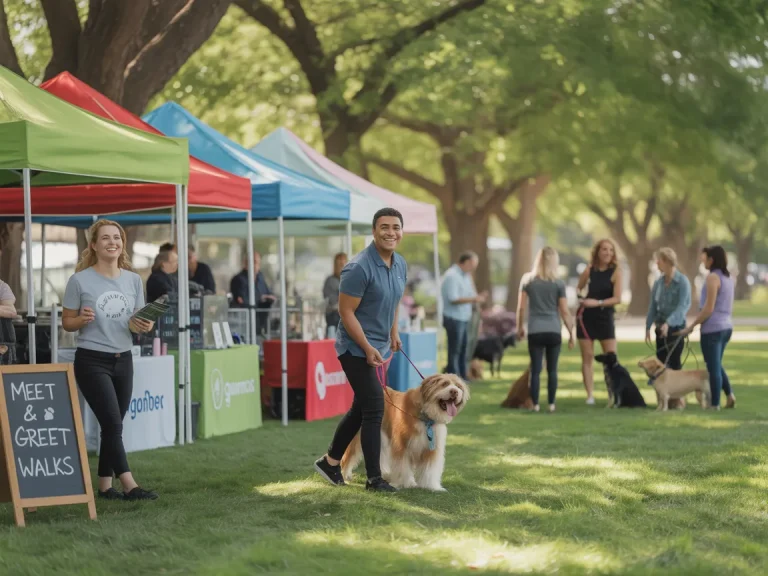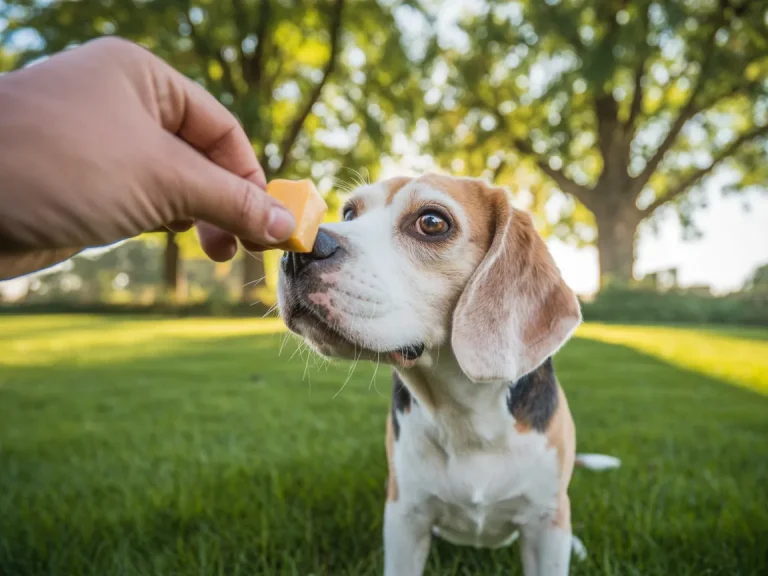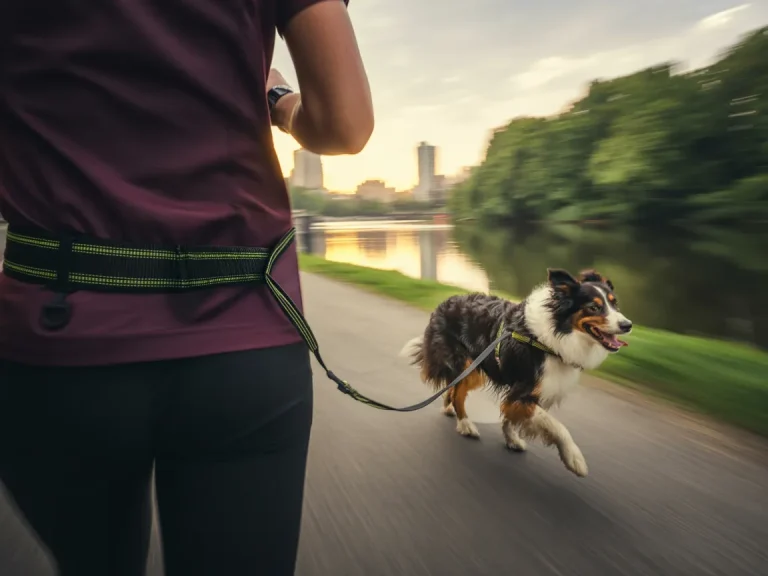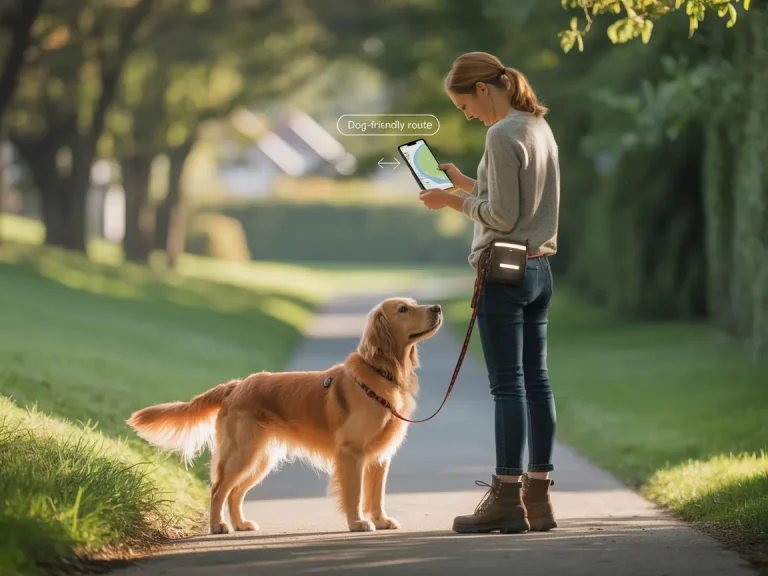Few daily rituals strengthen the bond between you and your dog like a good walk. But without a little thought, that peaceful outing can turn into a tug-of-war, a panting parade, or just plain frustration—for both of you. Whether this is your first dog-walking rodeo or you’ve been doing it long enough to have calluses on your hands, these seven down-to-earth strategies will make your strolls smoother, safer, and more satisfying.
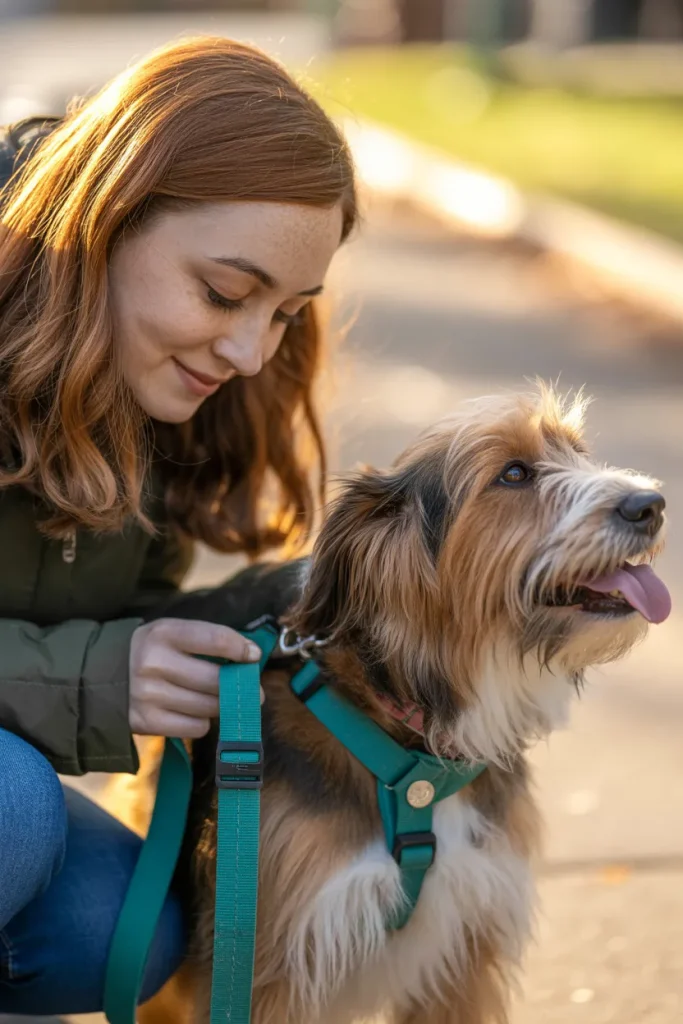
1. Choose Gear That Matches Your Dog’s Body and Temperament
A walk really begins before you open the door. The right gear keeps your dog comfortable, protects their body, and keeps you both in sync.
Harness vs. Collar
If your dog is chilled and never pulls, a simple flat collar does the job—think of it like a casual sweater: fine for low drama, but not much structure when things get excited.
For the adolescent rocket launcher who thinks every squirrel is a mission, a front-clip harness helps redirect that forward shove without harsh corrections. It’s like giving their momentum a gentle suggestion instead of a yank.
Then there’s the head halter—powerful steering, especially for dogs who’ve perfected the art of pulling. It needs a soft introduction, though. I once had a 70-pound lab mix that stiffened like a flagpole the first week; a few treats, calm short sessions, and now I can guide him like I’m holding the reins of a slower train.
Round out your setup with a 6-foot leash in something tough like biothane or quality nylon. Forget retractables. Their thin cords bite into skin and, irony alert, tend to teach dogs that pulling earns them more freedom. Not the lesson you want.
2. Treat the Walk as a Mental Workout
You probably already know dogs see the world with their noses. So why rush past the good stuff? Giving them structured sniff time is like handing them a puzzle wrapped in fresh air.
Pick a couple of 10-foot stretches—call them “sniffari squares”—and let your dog dive in for a full minute. No tugging, no hurrying. You’ll notice after a few of these, they’re calmer on the rest of the route because they’ve already had their “thinking” reward.
For anxious dogs, I carry a small stash of kibble and scatter it in clumps of grass. Watching a nervous rescue pup slowly build confidence while foraging, head down and tail easing up, is one of those walk moments that feels like therapy.
What used to be just a ten-minute trot becomes a sensory treasure hunt. You’re not just burning energy—you’re engaging brain cells. That’s why, by the time you get home, they’re tired in the good way: content, not wired.
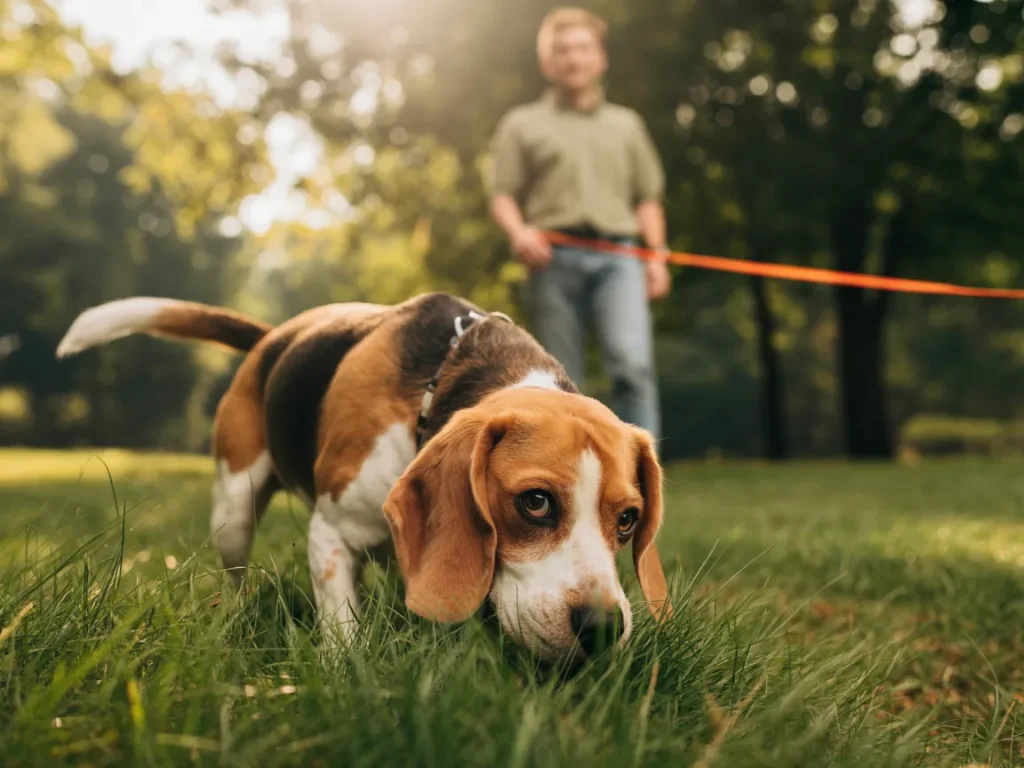
3. Master Leash Handling Like a Pro
Leash math isn’t complicated, but the way you hold it can make all the difference. A sloppy grip turns into shoulder strain for you and a tug-fest for them.
Try the “thumb loop grip”: slide the handle over your thumb, wrap it once around your palm, and let your fingers close gently. You stay connected without clutching like you’re holding a runaway suitcase, and your dog feels the subtle guidance without it turning into a wrestling match. I learned this the hard way on a rainy day when I was hauling a beagle who’d just spotted a duck—changed my whole posture and the rest of the walk, too.
The Power of “Belly Button” Positioning
Here’s a little secret the pros use: keep the excess leash looped near your navel. When your arm stays close to center instead of flung out, those sudden lunges don’t rip into your shoulder—they transfer into your core, which can handle the shock like a champ. It’s like bracing for a gust of wind: if you lean into it properly, you stay upright; if you overreach, you stumble. I started doing this after a springer spaniel I was walking tried to chase a squirrel and nearly pulled me off my feet. That one small tweak kept me from throwing out my shoulder and kept the walk going without drama.
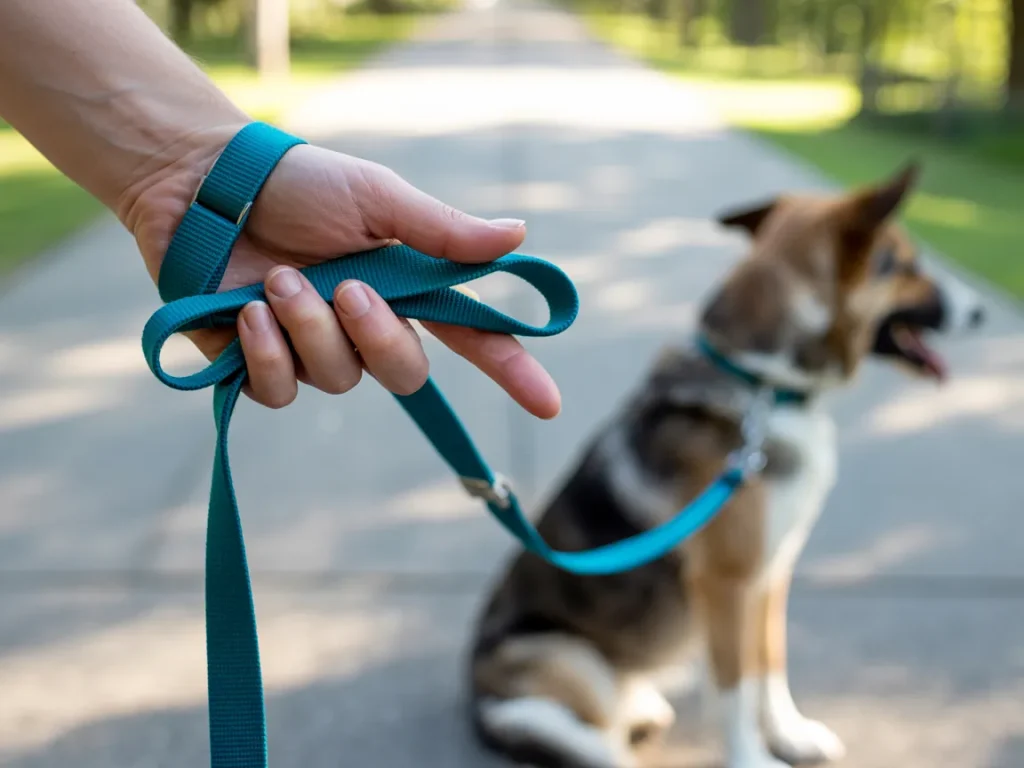
4. Plan Routes With Built-In Safety Exits
Even the most mellow walk can get sideways fast when an off-leash dog appears, a cyclist zooms by, or a sudden noise spooks your pup. That’s why smart route planning includes “escape zones”—places you’ve scoped ahead of time where you can pivot: a bench to step behind, a gated alley to duck into, a wide driveway where you can create space.
Think of three quiet detours—side streets with less foot traffic—that you can slip into if your dog is feeling edgy or another dog is approaching. I once had a reactive shepherd start to stiffen when a pack of joggers came into view; a quick cut down a parallel street with almost no people let us decompress without the buildup turning into a full meltdown.
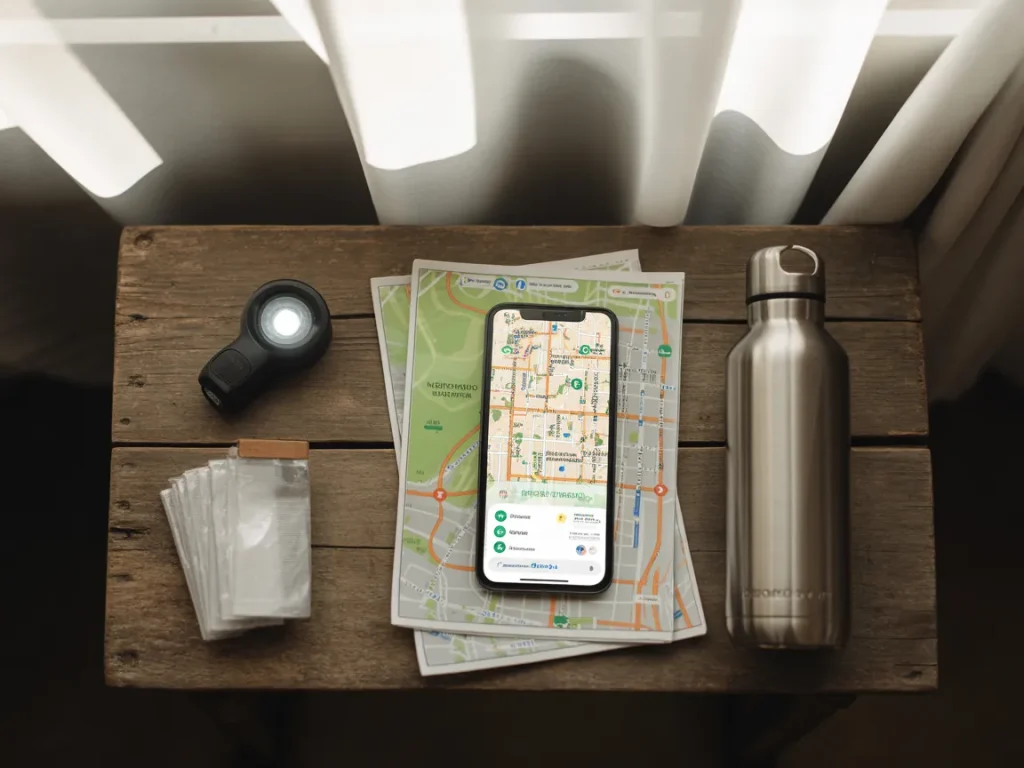
Also, keep weather in mind. Spot overhangs or covered entries that work as impromptu shelters if a sudden downpour hits, or shady pockets for short-nosed breeds who overheat fast. Having those known fallback spots turns you from a reactive walker into someone who’s in charge of the environment, not just along for the ride.
5. Integrate Micro-Training for Polite Manners
You don’t need a formal session to reinforce good behavior—just sprinkle tiny training moments throughout the walk. At every curb, pause for a sit and a quick eye check before moving on. When you pass a barking fence, ask for five steps of heel and reward with something your dog thinks is a treasure. After a good sniff break, a cheerful “let’s go” and a bit of praise cues them that the transition was their idea and they nailed it.
These micro-sessions stack. A month in, you’ll start seeing those automatic check-ins: a glance up at you without being asked, a polite settle when something catches their attention. That’s the sign of a dog who’s not just walking—they’re partnering.
6. Respect Canine Communication Signals
Your dog talks to you all the time; you just need to listen in their body language. Little things like lip licking or yawning on a crowded sidewalk aren’t boredom—they’re the early “I’m uneasy” flag. If you see the whites of their eyes (the dreaded whale eye), give them space before tension spikes. Soft blinks, loose tail wags, relaxed posture? That’s your green light to keep cruising.
I had a rescue who would flash whale eye the split second a noisy delivery truck rolled by; once I caught it early and sidestepped into a quiet driveway, we both avoided a full-blown overreaction, and she started trusting that I’d read her and act before things got intense. Adjusting pace, rerouting, or just letting them pause when they signal discomfort isn’t coddling—it’s building trust. The more you honor those signals, the fewer “bad walks” you’ll have, because you’re not forcing compliance; you’re collaborating.
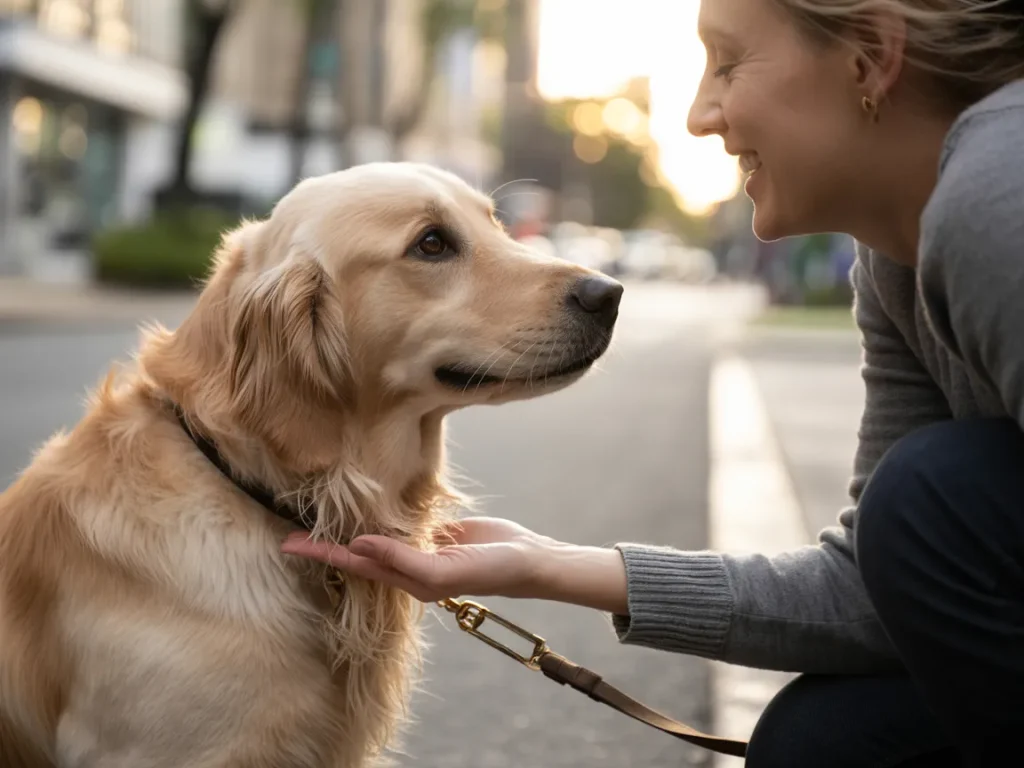
7. Debrief and Maintain Gear Post-Walk
A walk doesn’t truly end when you step back inside. The aftercare—both for the dog and your equipment—is where consistency turns good walks into great ones.
Right after the walk, get them some cool water. If they’re the “I’ll drink when I feel like it” type, stir in a splash of low-sodium broth; it’s like adding a little flavor boost to their hydration station. While they’re sipping, do a quick paw sweep: check between toes for burrs, tiny cuts, or traces of salt (those de-icing granules are tasty to a curious tongue but nasty if ingested). A damp cloth and a gentle wipe can save you a grooming-time headache.
Take a second to eyeball your gear. Look for stress points on leash clips, make sure nothing’s cracked or overly worn, and rinse off muddy harnesses before mildew or bacteria get comfortable. While you’re at it, do a quick paw sweep—wiping their paws after walks removes lingering salt or grit that can burn or be licked into their system. Then, jot down anything unusual: was there stiffness that lingered, a spike in reactivity, or a new trigger that popped up? These notes—shared with owners or a vet—turn vague “he seemed off” impressions into useful patterns.
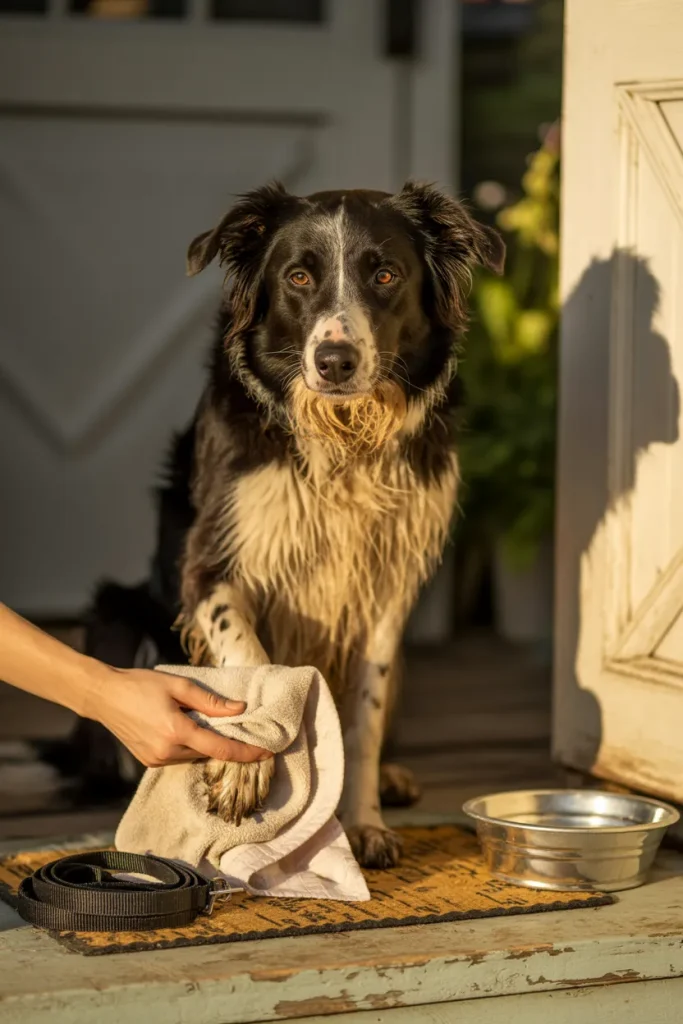
Consistent debriefs do more than check boxes; they help you tailor each future walk to the individual dog, making every outing smarter, safer, and more tuned-in.
Conclusion
Great walks aren’t accidents—they’re the result of planning, paying attention, and staying flexible. Choose gear that fits, give their nose the time it deserves, handle the leash like you mean it, have escape routes ready, sprinkle in tiny training wins, read their signals, and follow through afterward. Do that, add your own flavor from experience, and watch a simple walk become a daily ritual that builds trust and connection. A short leash doesn’t mean small adventures—sometimes it’s what leads you both to the biggest discoveries.
Disclaimer: This article is for informational purposes only and does not constitute professional veterinary advice. Always consult a licensed veterinarian or certified dog trainer regarding the specific needs and health of your dog.
